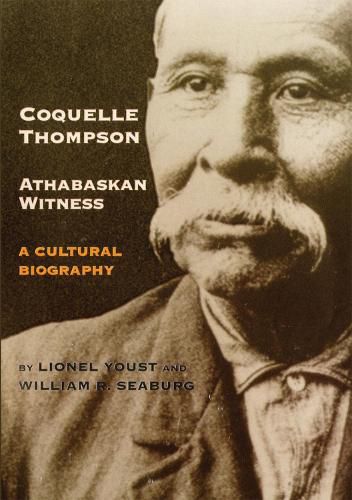Readings Newsletter
Become a Readings Member to make your shopping experience even easier.
Sign in or sign up for free!
You’re not far away from qualifying for FREE standard shipping within Australia
You’ve qualified for FREE standard shipping within Australia
The cart is loading…






Coquelle Thompson (1849-1946) was an Upper Coquille Athabaskan Indian from along the Oregon coast. During his lifetime, he worked along as farmer, hunting/fishing guide, teamster, tribal policeman, and served as expert witness on Upper Coquille and reservation life and culture for anthropologists.
While captain of the tribal police, Thompson was assigned to investigate the Warm House Dance, the Siletz Indian Reservation version of the famous Ghost Dance. Thompson became a proselytizer for the Warm House Dance, helping to carry its message and performance from Siletz along the Oregon coast to as far south as Coos Bay.
Thompson lived through the conclusion of the Rogue River Indian War of 1855-56 and his tribe’s subsequent removal from southern Oregon to the Siletz Reservation. During his lifetime, the Siletz Reservation went from one million acres to seventy-seven individual allotments and four sections of tribal timber.
Lionel Youst and William R. Seaburg include an examination of the works of six anthropologists who interviewed Thompson over the years: J. Owen Dorsey, Cora Du Bois, Philip Drucker, Elizabeth Derr Jacobs, Jack Marr, and John Peabody Harrington.
$9.00 standard shipping within Australia
FREE standard shipping within Australia for orders over $100.00
Express & International shipping calculated at checkout
Coquelle Thompson (1849-1946) was an Upper Coquille Athabaskan Indian from along the Oregon coast. During his lifetime, he worked along as farmer, hunting/fishing guide, teamster, tribal policeman, and served as expert witness on Upper Coquille and reservation life and culture for anthropologists.
While captain of the tribal police, Thompson was assigned to investigate the Warm House Dance, the Siletz Indian Reservation version of the famous Ghost Dance. Thompson became a proselytizer for the Warm House Dance, helping to carry its message and performance from Siletz along the Oregon coast to as far south as Coos Bay.
Thompson lived through the conclusion of the Rogue River Indian War of 1855-56 and his tribe’s subsequent removal from southern Oregon to the Siletz Reservation. During his lifetime, the Siletz Reservation went from one million acres to seventy-seven individual allotments and four sections of tribal timber.
Lionel Youst and William R. Seaburg include an examination of the works of six anthropologists who interviewed Thompson over the years: J. Owen Dorsey, Cora Du Bois, Philip Drucker, Elizabeth Derr Jacobs, Jack Marr, and John Peabody Harrington.